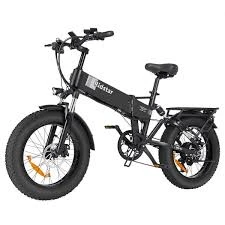
- Afrikaans
- Albanian
- Amharic
- Arabic
- Armenian
- Azerbaijani
- Basque
- Belarusian
- Bengali
- Bosnian
- Bulgarian
- Catalan
- Cebuano
- Corsican
- Croatian
- Czech
- Danish
- Dutch
- English
- Esperanto
- Estonian
- Finnish
- French
- Frisian
- Galician
- Georgian
- German
- Greek
- Gujarati
- Haitian Creole
- hausa
- hawaiian
- Hebrew
- Hindi
- Miao
- Hungarian
- Icelandic
- igbo
- Indonesian
- irish
- Italian
- Japanese
- Javanese
- Kannada
- kazakh
- Khmer
- Rwandese
- Korean
- Kurdish
- Kyrgyz
- Lao
- Latin
- Latvian
- Lithuanian
- Luxembourgish
- Macedonian
- Malgashi
- Malay
- Malayalam
- Maltese
- Maori
- Marathi
- Mongolian
- Myanmar
- Nepali
- Norwegian
- Norwegian
- Occitan
- Pashto
- Persian
- Polish
- Portuguese
- Punjabi
- Romanian
- Russian
- Samoan
- Scottish Gaelic
- Serbian
- Sesotho
- Shona
- Sindhi
- Sinhala
- Slovak
- Slovenian
- Somali
- Spanish
- Sundanese
- Swahili
- Swedish
- Tagalog
- Tajik
- Tamil
- Tatar
- Telugu
- Thai
- Turkish
- Turkmen
- Ukrainian
- Urdu
- Uighur
- Uzbek
- Vietnamese
- Welsh
- Bantu
- Yiddish
- Yoruba
- Zulu
Dec . 20, 2024 14:38 Back to list
How to Properly Adjust a Mountain Bike Rear Derailleur for Optimal Performance
Adjusting a Mountain Bike Rear Derailleur A Comprehensive Guide
Maintaining your mountain bike is essential to ensure smooth and efficient riding. One of the critical components that require regular adjustment is the rear derailleur. This component plays a crucial role in shifting gears, allowing riders to navigate various terrains with ease. In this article, we will walk you through the steps to adjust your mountain bike rear derailleur effectively.
Understanding the Rear Derailleur
Before diving into the adjustment process, it's important to understand what the rear derailleur does. It is responsible for moving the chain between the different gears on the rear cassette. Proper adjustment helps ensure smooth shifting, avoids chain slippage, and enhances overall performance. A misaligned derailleur can lead to poor shifting and potential damage to your bike.
Tools Required
To adjust the rear derailleur, you will need a few basic tools 1. 5mm Allen wrench (for most derailleur mounts) 2. Screwdriver (flathead and Phillips) 3. Chain lube 4. A bike stand (optional, but helpful) 5. Cleaning cloth
Step-by-Step Adjustment Process
1. Inspect the Rear Derailleur Before making adjustments, visually inspect the derailleur for any damage. Ensure that the hanger is straight and that there is no visible wear on the derailleur itself or the cable.
adjusting mountain bike rear derailleur

2. Set the Gear Shifter Shift your bike into the smallest chainring on the front and the smallest cog on the rear. This position is often referred to as the home position and is the best starting point for adjustment.
3. Adjust the High Limit Screw The high limit screw controls how far the derailleur can move towards the smallest cog. If the chain does not move smoothly onto the smallest cog, this screw may need adjustment. Use your screwdriver to turn the high limit screw (usually marked with an H) clockwise to reduce travel or counter-clockwise to increase it. Test the shifting by cycling through the gears.
4. Adjust the Low Limit Screw Shift your bike to the largest cog. The low limit screw prevents the derailleur from moving too far towards the spokes. If the chain is skipping or if it gets stuck, adjust the low limit screw (marked with an L) in a similar manner as the high limit screw to ensure proper alignment.
5. Cable Tension Adjustment The cable tension plays a vital role in shifting. If the derailleur struggles to shift up or down, you may need to adjust the barrel adjuster, which is typically located where the cable meets the derailleur. Turning the adjuster clockwise generally increases tension, while counter-clockwise decreases it. Make small adjustments and test after each change.
6. Test the Shifting Once you have made your adjustments, test the bike by shifting through all the gears. Pay close attention to how smoothly the chain transitions from cog to cog. If you notice any skipping or hesitation, revisit the limit screws and cable tension settings.
7. Lubrication and Final Touch-Up After ensuring everything is working properly, apply some chain lube on your chain for optimal performance. Wipe away any excess with a clean cloth.
Conclusion
Adjusting your mountain bike’s rear derailleur may seem daunting, but with a little practice, it can be done efficiently. Regular maintenance not only enhances your riding experience but also prolongs the lifespan of your bike components. Always remember to keep an eye on your gear shifting while riding, and don’t hesitate to make adjustments as needed. Happy cycling!
-
The Ultimate Kids' Four-Wheeler Experience
NewsJul.09,2025
-
The Ultimate Guide to Mountain Bikes: Gear Up for Your Ride
NewsJul.09,2025
-
The New Age of Cycling: Electric Bikes for Every Rider
NewsJul.09,2025
-
The Best Kids Bicycles: Ride in Style and Safety
NewsJul.09,2025
-
The Best 3-Wheel Scooters for Kids: Fun, Safety, and Adventure
NewsJul.09,2025
-
Revolutionize Your Ride: Affordable Electric Bikes
NewsJul.09,2025
-
Finding the Perfect Mountain Bike for Every Rider
NewsJul.09,2025



